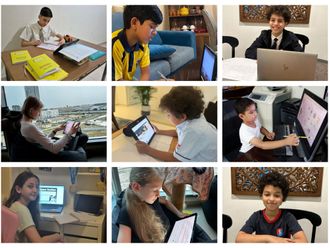Abu Dhabi: An innovative student-led project at the UAE University in Al Ain is hoping to make reading easier for visually impaired people by developing a pocket-sized portable device that can translate reading materials into Braille.
The device, which is still in its prototype stage, has a built-in camera that can be used to take photos of any type of reading material, which is then converted into Braille, allowing a visually impaired person to read at any time they want.
“This device is intended to help visually-impaired people around the world become more independent in their daily lives. It will mean they don’t have to wait for Braille versions of books to be published,” said Faraj Al Faraj, one of the students involved in the development of the device called Braille Eye.
“The device can be used in supermarkets, to read bills, or in restaurants, to read menus. Braille Eye is designed to help them read anything, any time, and anywhere,” he added.
Mahmoud Abdul Malik, who is also working on the project, explained that the device has been worked on since May last year, and can translate up to 40 different languages.
“The device is adjustable, and can translate at least 40 different languages including Arabic and English,” he said.
“The technology we use to convert the written material is called optical character recognition, it is a proven and reliable technology that gives us an accuracy of 98 per cent,” he added.
Built-in camera
The camera itself is built on the back of the device, so all the person has to do — for example if he has a bill and wants to read it — he points the camera at the bill and takes the picture, and then the text will be translated into Braille on the top side of the device which has a built in refreshable Braille display that allows the visually impaired person to read the bill,” he said, explaining how the whole process works.
According to Abdul Malik, the students are planning on having a group of visually impaired people use the device to see how it works, and to see what further improvements can be made based on the results.
“The next stage of the project is to have visually impaired people taking the device and using it in their daily lives and to see what feedback they give us.
"Once we get their opinion, we will make any improvements based on their recommendation, and look to have the final developed device made available for the market,” he said.











